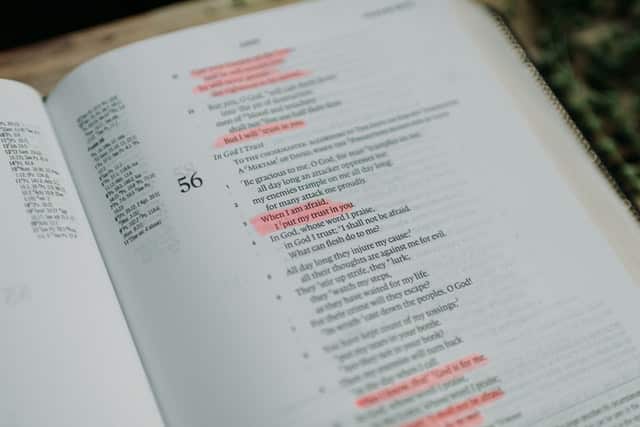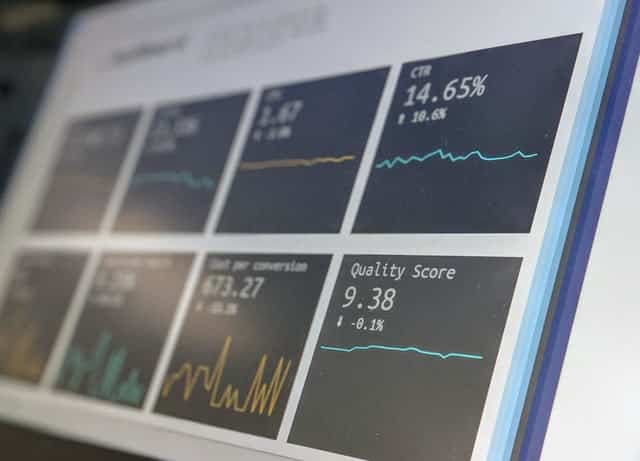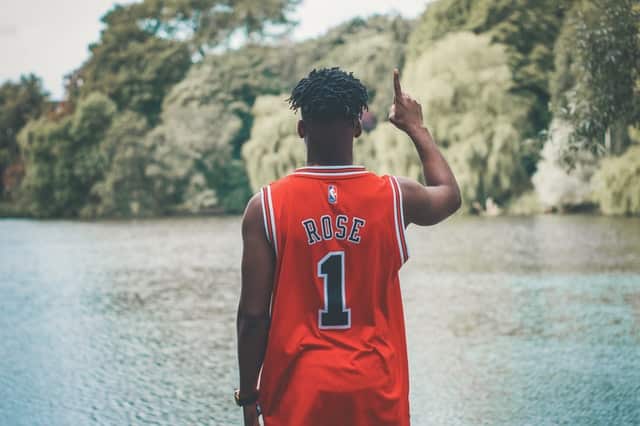Timing is everything.
And that’s especially true when it comes to Twitter.
Because you have only a small window to catch your audience’s attention. Miss that window and your Tweet could completely flop, regardless of how great it is.
So, knowing the best times to post on Twitter is critical if you want to squeeze every bit of potential out of the platform.
But finding your “golden hours” can be tough.
You have to find the balance between several different factors (more on this in a minute) and resist the urge to blindly follow “best practices”.
That means approaching Twitter like a scientist.
And that’s exactly what I’ll show you how to do in this article.
Why You Should Take Timing Seriously

Whether you like it or not, you’re at the mercy of Twitter’s algorithm.
And the algorithm utilizes reverse-chronology in its algorithm.
What does that mean?
Users generally see tweets as they are posted.
As time passes, recent and relevant tweets move to the top of the feed, pushing everything else down.
This isn’t the only part of the algorithm by any means, but it plays a critical role in deciding what tweets users see when they log in.
And that means you’ll have to literally tweet when your audience is online to maximize your visibility.
But how do you figure that out?
And what are you supposed to make of the studies that indicate Tuesday mornings (for example) are the best time to Tweet when that might not be helpful in your situation?
Valid questions.
Throughout the rest of this article, I’ll show you a step-by-step process you can use to find this information and answer these crucial questions in your specific context.
When Is the Best Time to Post on Twitter?
The short answer is: whenever your audience is most active.
Is Your LinkedIn Not Delivering Results?
Just released: my new book to help professionals, entrepreneurs, and business owners maximize LinkedIn for real growth.
With years of LinkedIn expertise, Maximizing LinkedIn for Business Growth offers actionable steps to build your brand, expand your network, and drive results.
Start leveraging LinkedIn like never before—grab your copy now! Click the cover or button below to buy on Amazon.
The general advice like “post on Fridays at 9 am PST” doesn’t apply to you if your audience isn’t online.
So, while there are generally times and days that are better for engagement on average, you should always let your audience dictate when you post on Twitter.
That begs the question…
How do you know when your audience is most engaged?
The easiest way is to utilize the Analytics tool on Twitter.
To access it, simply head to your profile, click “More” on the sidebar, then “Analytics”.
Then, click on “Tweets” on the navigation bar.
This will show you a timeline with your impressions over the last 28 days. You can adjust the date range to show up to 91 days at a time and you can go back several years if needed.
On the right sidebar, it shows you your engagements over the same period–it includes likes, retweets, link clicks, engagement rate, and more.
Finally, Twitter analytics also has a section at the bottom that shows your top tweets over the same period. This can help you see trends in the types of content that get the most engagement.
Further Reading: How to Find My Top Tweets – and Those from My Competitors – on Twitter?
What should you do with all of this info?
I recommend comparing several different date ranges and taking note of the days that get the most impressions and engagement.
The only thing this tool doesn’t really help with is determining the best time of day to tweet.
To find this, you have two options:
1. Tweet on the best days for your audience (as determined by Twitter Analytics), then test different times and take note of which get the best engagement. Not scalable but works if you’re on a budget.
2. Use 3rd party tools that help get this information for you. There are several tools like Tweriod, Followerwonk, and Missinglettr that track this data and have free versions.
With this data in hand, you are in a prime spot to find the real best time to post on Twitter for your brand.
Further Reading: The 21 Best Twitter Tools for Marketing
What Do Studies Say About the Best Days to Tweet?

Wildly different things.
Like completely opposite and contradictory things.
I think this comes back to studies being done in different contexts–which further highlights the need to find the best time to post on Twitter for your audience.
For instance, the Hootsuite social team found that the best time to tweet is between 6 am-9 am PST on Mondays and Thursdays.
But Hubspot, in a survey of social media marketers, found that most people say the best times to post on Twitter are Fridays between 12 pm-9 pm. They actually cite that early mornings (like the Hootsuite study suggests) are the worst times to tweet.
And then Sprout Social found that Mondays, Tuesdays, Wednesdays, Fridays, and Saturdays at 9 am were the best times to tweet–with Tuesdays and Wednesdays being the best days and Sundays being the worst.
This trend of wide-ranging and contradictory suggestions stays strong as you look through other studies.
Am I saying that all of them are bogus?
Of course not.
I’m saying that the inconsistency further points to the fact that the only thing that matters is when your audience is active on Twitter.
That is the best time to post–period.
Let YOUR data dictate when you tweet and don’t worry about the broad “best practices” in these studies. Use those insights as extra things to test–not the foundation of your strategy.
6 Other Factors to Consider When Trying to Identify the Best Time to Post on Twitter
1. Your Industry
Are you B2B or B2C?
Even this broad distinction has a massive impact on the best times to tweet.
According to a Quicksprout study, B2C actually sees a big lift in engagement during the weekends–while B2B predictably is most accessible throughout the week.
This will likely be amplified in your specific vertical.
For example, B2B tech likely has specific nuances in terms of the optimal times to post on Twitter that B2B finance doesn’t–and vice versa.
2. Your Ultimate Goal

What are you looking for?
Likes? Retweets? Mentions? Clicks? Or something else?
Obviously, all of these are great, but different types of content lend themselves to different types of engagement.
And the best time to tweet will vary depending on the type of engagement you’re going for.
For instance, if you’re hoping to get a brand’s attention, you’ll have to schedule your tweet around their office hours, lunch breaks, and more–so morning might be best.
Or if you’re trying to get clicks, likes, and retweets on a thought leadership-style tweet, you need to schedule it around when your followers are online and engaged so you can get as much engagement as fast as possible.
The Twitter algorithm ranks tweets based on engagement, so a fast boost of engagement can go a long way.
Further Reading: The 3 Best Ways How to Schedule Tweets for Twitter
3. Your Audience’s Location
Double-check your stats to make sure you know the top 3 states or countries where your audience is located.
Making incorrect assumptions about your audience–like most of them being in EST when they’re really in PST–can be lethal and fly under the radar.
Location is especially important if your audience is made up of more than one time zone. To ensure you’re reaching every part of your audience, you’ll want to post multiple times per day.
You might even discover there’s a time that receives the most engagement from all of your time zones.
4. General Twitter Statistics

These Twitter stats (provided by Hootsuite and Neal Schaffer) can provide further insight into your posting strategy, so I recommend keeping them top of mind:
- The number of total users is expected to rise above 329 million
- ¼ of U.S. adults use Twitter
- 30% of users are female
- 42% have a college education
- Twitter users usually have higher incomes than average
- 25% of U.S. users account for 97% of all U.S. tweets
- The average user spends over 5 hours every month on Twitter
- Close to 50% of Twitter’s users consume news on the platform regularly
- 54% of users are more likely to purchase new products
- People will spend 6-minutes per day on Twitter
- Millennials use Twitter more than Gen-Z
- 500+ million tweets are sent per day
Further Reading: The Top 21 Twitter User Statistics for 2025 to Guide Your Marketing Strategy
5. Your Content Type
Consider adjusting your tweeting schedule around the type of content you want to post.
For instance, if you’re selling a product or directing users to an online shop, try posting when online shoppers are most active. This SaleCycle study suggests that online shoppers are most likely to make their purchases in the mornings and evenings.
Maybe part of your content strategy is crafting tweets based on what’s trending. In that case, keep a close eye on breaking news, headlines, and hashtags. 69% of Twitter users claim to get their news directly from Twitter.
If you can post relevant tweets at the same time users are checking for the latest news updates, you’ll grab their attention and increase your chances of making it to the Trending Page.
Note: Twitter shows users tweets based on what’s trending in their current location. If you’re targeting a different country, you can actually change which trends you’re seeing based on location from the Settings on the For You Page.
Make sure you’re posting the most relevant information from the countries in your specific audience.
Think logically when it comes to tweeting for your niche. When would users be most likely to see it?
6. Be Consistent
The most important thing you can do once you’ve found a time that works for you is to be consistent. Post frequently, post regularly and stick to the posting times that see the most engagement.
Your audience will start to anticipate tweets and other activity from you. When this happens, it can boost your initial engagement and increase your chances of a tweet going viral.
If your audience knows when to show up, they will. All you have to do is tell them when.
Further Reading: 9 Ways to Increase Your Twitter Engagement Today
The One Thing You Need to Remember…

The key to finding the best time to post on Twitter for your business is twofold:
- Determine what days and times your audience is most engaged
- Test and iterate
We’ve already touched on #1 in length, but #2 is the key to finding success.
You aren’t going to hit a home run the first time.
Your going to miss–likely a lot–even though your analytics suggest a certain day is the best window for you to tweet.
Expect this and don’t be discouraged.
How you respond and adapt will determine your success.
So, view this as a big marketing science experiment and stick to the process.
Hunter Branch is the founder of Rank Tree—a content marketing agency that grows blogs that fuel 7-figure online businesses.









